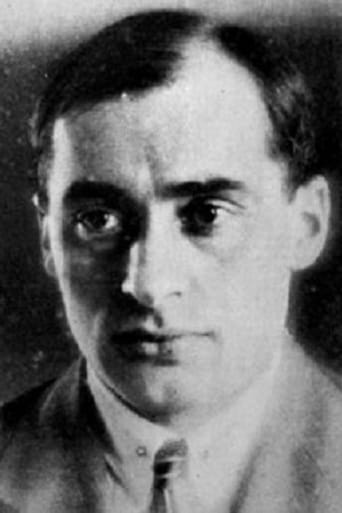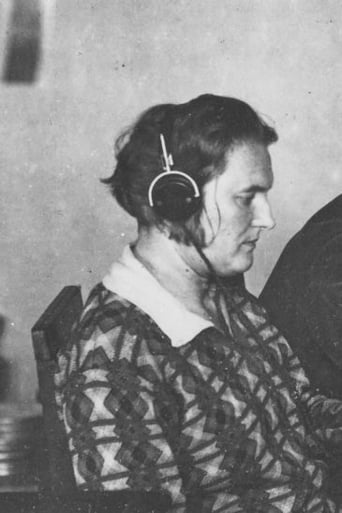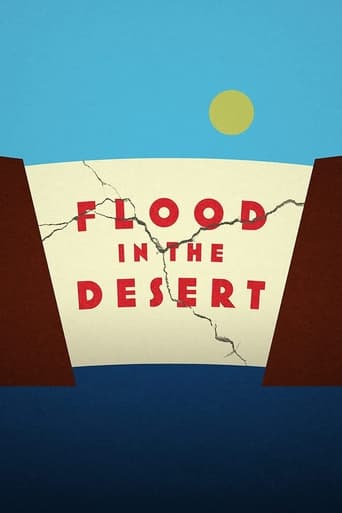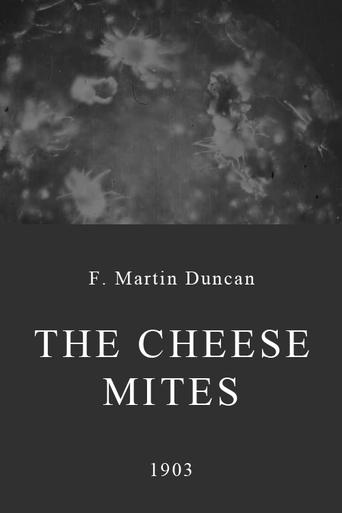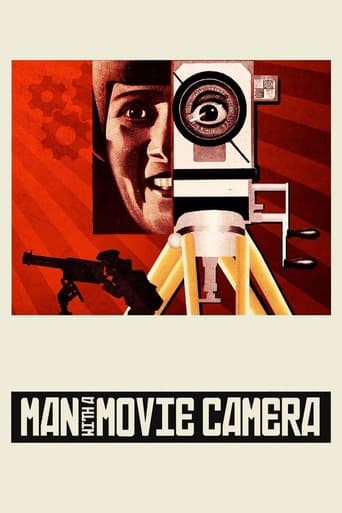
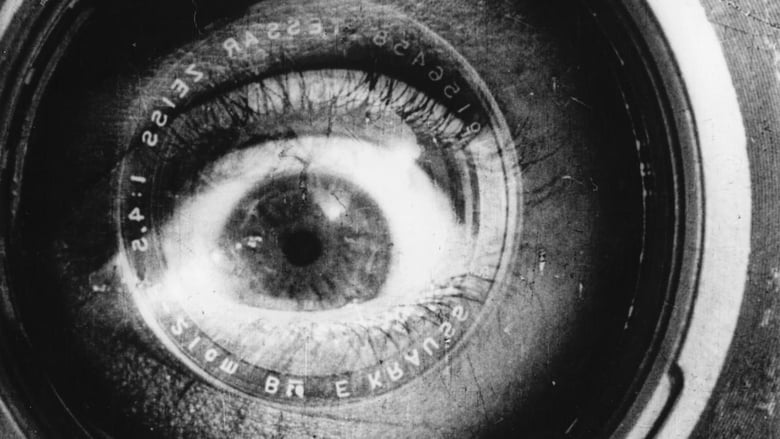
Man with a Movie Camera (1929)
A cameraman wanders around with a camera slung over his shoulder, documenting urban life with dazzling inventiveness.
Watch Trailer
Cast
Similar titles
Reviews
Good concept, poorly executed.
best movie i've ever seen.
Although it has its amusing moments, in eneral the plot does not convince.
Very interesting film. Was caught on the premise when seeing the trailer but unsure as to what the outcome would be for the showing. As it turns out, it was a very good film.
Justin Gates Online Review "Man with a movie Camera" The film, "Man With a Movie Camera" is a silent documentary of the cities Moscow, Kiev, Kharkov, and Odessa in Russia that demonstrates the real feel of being in the city quietly observing how everyday city life occurs. It is viewed as some kind of experiment by many because it is the first of its kind utilizing a silent approach to documentary showing city life. Created by filmmaker Dziga Vertov, the film has zero actors and relies solely on the social and work lives of the everyday Russian, rich or poor in this urban view of life. This black and white avant-garde stylized film, meaning experimental, was hated by many because of how different and experimental it was yet loved and appreciated by many for these exact same reasons. Loved for its various types of cinematic techniques and skills that Vertov either created, adapted or used, even though it received tons of harsh criticism back then, it is widely accepted as something new, inventive and fresh. A timeless film that filmmakers and filmgoers alike of all ages can enjoy at any point in film history and time to come. Some of the cinematic techniques that Vertov uses are fast motion, slow motion, split screens, jump cuts, freeze frames, Dutch angles, close-ups, tracking shots, and even footage that plays backwards. Also some critics thought his film was somewhat controversial because of the scenes depicting childbirth, something that is rarely given screen time, or scenes with women topless at the beach. One of my favorite scenes that he shoots is the scene in which a couple is getting married and he showcases a lot of close ups on the couples faces and always pictures them on the screen together, symbolizing their unity or togetherness. However, shortly after this scene one can view a couple getting divorced actually and you could cut the tension with a knife it was that apparent. He utilizes different techniques by never showing the soon to be divorced couple on the screen together. He does close ups of their sad or shaken faces but never together in the same shot symbolizing their essence of being separated. A complete stark contrast to the earlier scene of newlyweds and this depiction made me appreciate this film more because it is pure genius how he utilizes a camera to evoke different emotions or feelings to the audience. Another example of a scene that utilizes a different genius camera technique was the city scape of Moscow however it was sped up in fast motion showing peoples commute in their lives and I thought this was very interesting because it seemed like a modern day sped up version of a New York City scape. A technique I always thought was unique to this generation's filmmakers of my timeline but I learned that it is much older than one would actually expect it to be. Through further research it was revealed to me that Vertov had a kind of Marxist ideology, and that his film served as a kind of propaganda documentary, something that was not apparent to me the first time I viewed it. He was trying to create a more modern city in which its purpose would be to expose lifestyle and thought in the Soviet country. Truly a man ahead of his time, Vertov wanted to enlighten the world, more namely Russians, to try and bring about understanding where the country was at the time. Overall Vertov's new and amazing ideals brought to life by his exceptional work of art known as "Man with a movie camera" was a film for the ages that had themes and techniques other filmmakers only dreamed of using and that is why his film is praised so heavily.
Dziga Vertov's 1929 film Man with a Movie Camera stands even today as one of the most powerful and breathtaking films of all time. Vertov's use of captivating lively scenes help to showcase a wide variety of emotions and likenesses describing what Russia and the City of Moscow were going through in their early communist era. Although silent this film speaks volumes as to what the capabilities and possibilities were at the time by bringing the reader into a broad range of fast cutting segments as well as close zooms that were revolutionary at the time they were first brought into modern film. I lost count on the instances where I found my eyes glued to the film in anticipation of what Vertov's crew would come up with.In instances of day to day life one may never consider drama to form in a way that conveys a message. This film captured this sense perfectly in its many on-screen sections that depicted the lives of the strangers in the film. Scenes of people going about their daily lives has never before been such an art form, let alone to those watching in the 1930s but even today. I am captivated by the meshing of multiple scenes together to create a work of art. One example of this are the trolley scenes where the film makers split the frame in half and give away the illusion that the area held within the combined frame is full of life and movement. Vertov also helped convey a sense of early Russian propaganda in an instance where the cameraman is shown standing high above the city peering into and recording the daily lives of the citizens below. The use of mise en scène is important in these two scenes because they always fill the screen with exactly what you are supposed to see, and there are no extras that could affect the vision of the film for the viewer.The film uses many different points-of-view to help captivate the viewer. I felt in many scenes that the director was trying to use every new trick that they had when it came to film making to make the film exciting. One example of a use of this was in the scene with the blinking girl transitioning to the rapid opening and closing of the window blinds. This scene was pivotal in drawing a viewer's eyes to the screen, the fast-changing scene caused the viewer to focus on what was happening in the film at that specific time. Another scene that helped bring the viewer into the film was when the camera appeared to be run over by the train early in the film. To someone watching the film in the 1930s one would question as to how the cameraman could have possibly survived such a stunt, causing much intrigue in the audience. Although the next scene shows how the crew simply dug a hole under the track and eventually escaped with their footage and unharmed. This captivating showing of originality was what set this film apart from films even today in my eyes. I never once felt for a moment that I was missing out on the lack of sound in the film as it was made up entirely visually.It has been shown, and through its very modernistic and knowledgeable approach in experimentalism that Man with a Movie Camera was a film decades beyond its time. The ability to capture an audience with things they may have never seen before is unparalleled in many films even today. The crew behind the film attempted to convey the message that there is more to film than just telling a story, it can move and shock the audience while captivating the feel of emotion within them. Fast moving scenes and witty editing come together perfectly to create an instant classic that I would recommend to anyone looking to truly understand what goes on behind the scenes of a film, and what goes into making a film that can draw an audience in effortlessly.
Sometimes called 'A Man with a Movie Camera', 'The Man with the Movie Camera', 'The Man with a Camera', 'The Man with the Kino-camera', or 'Living Russia'. This experimental, avante-garde film is indeed, a confusing masterpiece. Driven by the vision that cameras are supposed to show a deeper truth which could not be seen with the naked eye; Soviet writer/director Dziga Vertov AKA David or Denis Kaufman did all this, in an attempt for film truth AKA Kino-Pravda. Shot with a camera, over the course of three years in the towns of Moscow, Kiev, Kharkov and Odessa; the movie tells the story of a filmmaker (Dziga Vertov) traveling around a Soviet city with a camera slung over his shoulder, documenting urban life. Using a radical use of montage and other inventive editing techniques, such as jump cuts, close ups, split-screen, Dutch angles, hand-held, tracking shot, dissolves, over-lane, double exposure, fast and slow motion, Dziga Vertov is able to show an excellent example of an "industrial city symphony travelogue" newsreel. Man with a Camera really does show the film truth. It pretty much influence the Cinéma vérité style in France. Because of that, there is no other silent film like this, at the time. It remind me of the silent era version of 1982's 'Koyaanisqatsi' or 1992's 'Baraka', because it has no overall narrating, actors or dialogue (In this case, much intertitles). I also love how the movie explain, how movies are made. It really expose the business, in which, they make their money. The movie even freeze frame, toward the middle to show us, the viewers, how this movie was getting edited by his wife Elizaveta Svilova. It was great insight at the time. Let's remember, there wasn't a behind the scenes or making of a film, documentary back then. So, pretty much, this was your inside look at the business, besides joining Hollywood, or going to filmmaking school. This part of the film is the reason, why I wanted to see it. The way, they film things, is interesting to me. One good example is the oncoming train scene. It was intense. Showing how they pull it off, was amazing. Probably, the best part of the scene. Another is the superimposing shot of the cameraman setting up his camera atop a big mountainous camera. Even, the shot with the cameraman inside a beer glass was cool. It emphasizes that film can indeed do anything, and go anywhere. It was so surreal. Even with those dream-like staging sequences, most of the film is a series of newsreels of real-life actualities. While, the birth and death scene is kinda graphic. Its show, how real, this movie is. The movie is also pretty political with industrial driven message. The first shot of the city, is a couple of questionable bums sleeping on a bench. It's then show a woman engaging in target practice, intercut with a box of champagne bottles, which disappear one at a time, as if she is shooting them. Then, you see shots of showing the healthy frivolous or leisure activities with that of strong industrial workers. It shows the communism new belief of rational recreation and how it's better for people to have leisure more controlled, ordered, and improving as a team, rather than the belief that one has success through self-improvement and self-enrichment. It's clearly, a shot at capitalism beliefs by then-Leninism style beliefs. A man getting a shave is intercut with an axe being sharpened, show how metaphoric, this film can be, for the people. Not everything in this movie is intense, dark & political. There were some funny moments, such as a couple applying for a marriage license, being followed shortly afterward by another couple applying for a divorce. It even got sexy and romantic at times, with a woman getting out of bed and getting dressed. Follow by a date with a couple, then marriage. However, some of the others visuals in this film, is a little too weird, like the crawfish on a plate at a seafood restaurant is made to appear to crawl away or the shots of chess pieces being swept to the center of the board to understand the meaning. I don't know, how those visuals is supposed to help the message of the contemporary "man" evolve from a flawed creature into a higher, more precise form at all. Overall: While, some of the visuals in this film is too strange for the general viewers and too stage for documentary lovers. It's still a well made movie, worth seeing. So check it out if you get the time.
No "greatest movies ever made" list would be complete without this masterpiece which revolutionized and pioneered many cinematography and editing techniques. This is a great example of a perfect movie.This experimental documentary does not follow the typical plot structure and it is even different than most other documentaries as well. It contains no plot, no named characters, and no resolution. Its purpose is to show us what an ordinary day in a Soviet Town would feel like. It was filmed in the cities of Kiev, Kharkov, Moscow, and Odessa.What this film is most famous for is its cinematic techniques director Dziga Vertov invented which helped to pioneer different film techniques. It uses techniques such as double exposure, fast motion, slow motion, freeze frames, jump cuts, split screens, Dutch angles, extreme close ups, tracking shots, footage played backwards, a sequence of stop motion, and self-reflexive visuals. These techniques were popularized and they have been used in many movies ever since it was released. All of these dazzling techniques can be traced back to this film.Also, these different film techniques made many of the scenes feel very interesting. I can understand why someone might get bored during the film but I definitely do not have that problem. The techniques which I mentioned above kept me from getting bored and they made me love this film as much as I do. Because of the fabulous cinematography, this film's ending is one of my favorite endings of all time. It basically gave us a recap of all the techniques this film offered and it showed them to us very expeditiously. Also, this was the point in the film when it was playing its most upbeat and jazzy soundtrack. Considering that the film had an overall slow pacing throughout it, this sudden change in tone made me snap my attention back immediately almost as if somebody had just shot me and in turn, I couldn't look away from the screen. That feeling I felt is kind of like how you react to a jumpscare in a horror movie. Because of this, I finished the movie in a very positive way and it left me in awe.If you look at this film's Wikipedia page, you will see that a ton of soundtracks have been written for this film. Currently, there are 19 soundtracks written for it (or 20 if you count the original one written for it in 1929). This is actually pretty impressive because most movies I've seen only contain 1 soundtrack. I'm sure that some are more popular than others but I know that I'll never be able to find and listen to all of them. I don't know what the one I listened to is called, but I sure loved it. It contained many slow and relaxing songs to it and it also contained many upbeat and jazzy moments in certain sequences. I loved the classical music used in it and I think that it perfectly fit the movie's scenes of normal city life. It was neither too quiet and unnoticeable nor too loud and distracting.Another big reason I loved this film so much is that it simply provided me with a feeling of relaxation. Relaxation is a trait that many movies don't have nowadays. It is not a bad thing for a movie to have action sequences or fast-paced moments as they are often necessary depending on what a film is about, but it is always refreshing to watch a tame and entertaining movie. This is a film which you can watch if you're feeling stressed out and want to be calmed down. I don't recall many other movies which contain this. The only other ones I've seen which feel relaxing are "Russian Ark" and "Samsara" (both of these are some of my favorites ever made).I have seen many people ask the question "If you could go back in time to see one movie, which one would you see?" I could always pick one of my favorite films ever made such as "2001: A Space Odyssey", "Saving Private Ryan", and "12 Angry Men". Also, I could definitely say "Citizen Kane", "The Godfather", or many other famous movies considered to be some of the best films ever made, but I'm going to have to say this one by far. Most if not all of the film techniques in this film weren't found in earlier movies (even when they were, they weren't used too much in them) and I can only imagine how impressed movie goers were when they watched this film for the first time. I would probably be very impressed with this one as well and it would've probably given me one of the best movie experiences I would ever see in my life. That is why I'm going to have to pick this one.In conclusion, this movie is definitely a masterpiece. It has definitely received a ton of praise over the years and it is showing no sign of slowing down. In 2012, the "Sight and Sound" poll recognized it as the 8th best movie ever made. Also, in 2014, it was ranked as the best documentary ever made. All of the praise that this movie received is justified. It pioneered different film techniques, it has beautiful and fitting music in the background, and it provides a feeling of relaxation not found in many movies. I can understand why someone might get bored while watching this film but I don't have that problem. Even if I did, I can understand why it's a masterpiece. Now that I've watched this movie, I'm interested in checking out some other silent films and I will be probably watching them sometime in the future. For all I know, they might impress me a lot too.
